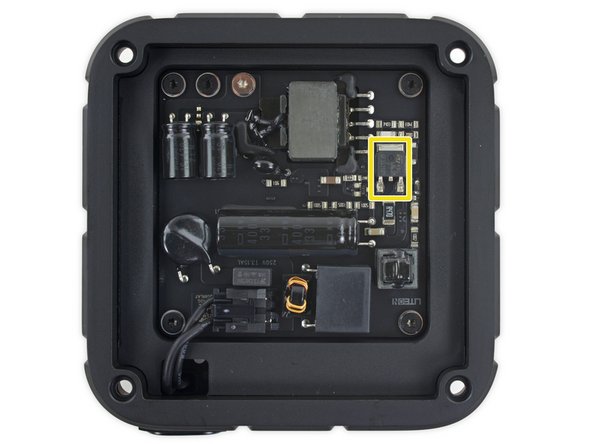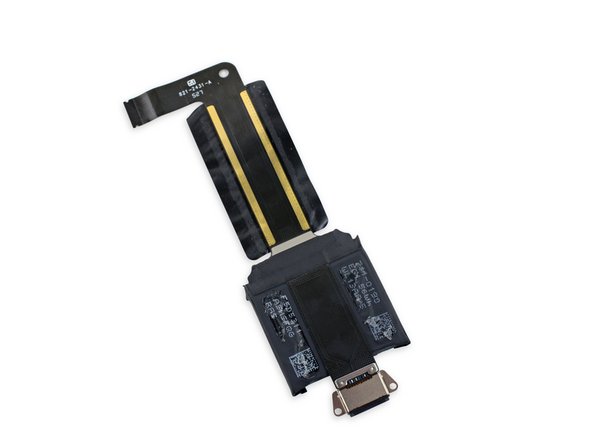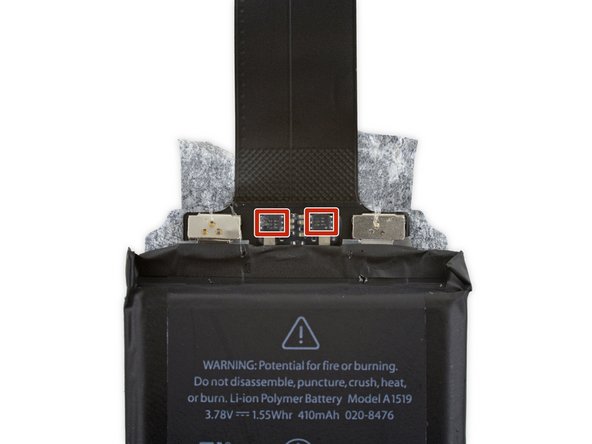Apple TV 4th Generation Teardown
ID: 49046
Description: Apple fans are doing the happy dance, what with...
Steps:
- We like to start with some specs, and in this case a lot of the good stuff is packed into the fancypants new remote. The box itself contains:
- Dual-core, 64-bit Apple A8 chip
- Ethernet, 802.11a/b/g/n/ac Wi-Fi, IR receiver, and HDMI 1.4 connectivity
- ...whilst the remote is packing:
- Glass Touch surface
- Dual microphones
- Accelerometer and gyroscope
- Bluetooth 4.0, IR transmitter, Lightning connector
- The Apple TV has really packed on some pounds since its last iteration.
- It seems to have lost a port in the process—the optical audio out has gone MIA.
- Meanwhile, the micro-USB port has morphed into a USB-C port. It doesn't bring anything new for end users, though—it's still for diagnostic and service functions only.
- Our teardown engineers go to work on the Apple TV and quickly find access through the bottom of the device—similar to the 3rd generation Apple TV.
- Only a few plastic clips stand in the way here, with no adhesive or screws in sight.
- Under the hood, we spy a few Torx screws.
- We take our Pro Tech Screwdriver Set out for a quick spin to release the combo heat sink/EMI shield.
- By the looks of it, this plate also serves as a bracket, giving the clips on the lower case something to latch onto. That's three functions in one component, folks.
- Here are some chips to go with your TV:
- Apple A8 APL1011 SoC, with SK Hynix H9CKNNNBKTBRWR-NTH 2 GB LPDDR3 SDRAM
- Universal Scientific Industrial 339S00045 Wi-Fi module
- SMSC LAN9730 USB 2.0 to 10/100 Ethernet controller
- Apple 338S00057 (similar part number to the 338S00055 custom memory controller found in the Retina MacBook 2015) (power management IC)
- Kinetic Technologies (formerly MegaChips) MCDP2700A1 DisplayPort-to-HDMI converter
- Texas Instruments TPS62130A 3 A step-down converter
- Fairchild Semiconductor DF25AU 010D 030D MOSFET
- More chips on the bottom of the logic board:
- SK Hynix H2JTEG8VD1BMR 32 GB NAND flash memory
- NXP Semiconductor CBTL01112 multiplexer/demultiplexer switch (likely)
- Texas Instruments MSP430V301 16-bit microcontroller
- Texas Instruments INA213 current sense amplifier
- ON Semiconductor LMV331SQ3T2G single comparator
- Texas Instruments CD3255 power monitor (likely)
- Nexperia (formerly NXP Semiconductor) 74LVC1G157GV single 2-input multiplexer
- IC Identification, continued:
- Renesas (formerly Intersil) ISL95870AHRUZ-T PWM DC-DC controller
- Texas Instruments TPS715A01 80 mA / adj. LDO regulator
- Diodes Incorporated 74LVC1G125FW5-7 non-inverting buffer/bus driver
- Diodes Incorporated 74LVC2G07FW4-7 dual buffer gate
- Last to come out of the box: a great big chunky heat sink with a cute little power supply board tucked away inside.
- Heat rises, so this heat-generating component lives on top of the stack, with the heat-sensitive logic board beneath.
- The redesigned power supply is rated at 12 V at 0.917 A. Compare that to the 3rd-gen Apple TV's main reactor, which pumped out 3.4 V at 1.75 A.
- We noticed a distinct lack of cables connecting the power supply to the logic board. We're theorizing the power is either transmitted by magic, or through the heat sink screw posts.
- And as a fun bonus, some chips:
- NXP Semiconductor TEA1738LT switch mode power supply controller
- Toshiba TLP291 photocoupler
- STMicroelectronics STF6N65M2 650 V N-channel MOSFET
- Behold, the new Siri Remote! Featuring dual microphones, a Glass Touch surface, and a Lightning connector, this remote is definitely a bit more complex than the Apple Remote of yesteryear.
- Apple also packed in an accelerometer and gyroscope, which they hope you'll use to play games—and browse Airbnb.
- With Bluetooth 4.0, the new Remote doesn't need direct line-of-sight with your TV.
- That is, unless you want to control your actual TV. Apple points out that the remote for their new TV can also control a television or A/V receiver.
- We found where Apple was hiding all the adhesive! Looks like our iOpener and pick don't get the day off after all.
- The entire top end of the remote is a giant button. Beneath it lies a gap that gives us a nice, consistent groove to pick apart.
- "Hey, Siri—say Ahhhh."
- If only it was that easy... Actually, it was pretty easy. It seems there's a first for everything!
- We're suddenly having flashbacks to the iPhone 5s. The top half is connected by a ribbon cable, hidden in the center of the device.
- Our in-house EOD expert gets to work with a spudger and carefully disarms the trap.
- With the top and bottom separated we notice a hidden yin yang motif. That's so zen of you, Apple.
- OICURAQT—That's what we say whenever we identify an IC, like the ones on this logic board:
- ST Microelectronics STM32L 151QD ultra-low-power ARM Cortex-M3 MCU
- Broadcom BCM5976C1KUB6G touch screen controller (as seen in the iPhone 5s/5c and iPad Air)
- CSR (Qualcomm) CSR1010 Bluetooth radio
- Texas Instruments TMS320C5545 ultra-low-power digital signal processor
- STMicroelectronics STMLS05 5-channel PMOS load switches
- InvenSense ITG-3600 3-axis gyroscope
- Texas Instruments BQ24250C battery charger and TI 49C37GI
- Chip identification, continued:
- Analog Devices ADAU7002 audio converter
- AKM Semiconductor AK8963 3-axis electronic compass
- Bosch Sensortec BMA282 accelerometer
- ON Semiconductor memory (likely)
- Texas Instruments TPS61220 boost converter
- ON Semiconductor NCP335FCT2G 2 A load switch
- Diodes Incorporated 74LVC1G58FW4 Configurable Multi-function Gate
- Look at that! A ZIF connected Lightning port cable.
- If Apple can pack a ZIF connector into a tiny remote like this then why is the iPad Lightning port soldered to the logic board?
- Answer: Apple proprietary secret.
- With just a bit of glue to pick apart, the Lightning cable/battery is out in a flash.
- With the Lightning port/battery assembly free of the remote, we see that the battery is soldered to the Lightning port.
- While we've never been a fan of soldered-on batteries, at least the Lightning port isn't soldered to the logic board!
- Because this 410 mAh battery is rechargeable, you'll never scramble to find batteries for your TV remote again. Thanks, Apple!
- At least not until it dies and you need to replace it.
- And hiding out at the base of the flex cable are two ABLIC, Inc battery protection chips.
- Apple TV (4th Generation) Repairability: 8 out of 10 (10 is easiest to repair).
- Modular construction and only a few major components simplifies repair.
- The power supply is a separate, replaceable component, and even its AC-in jack is modular.
- Standard Torx screws used throughout, nothing proprietary.
- The remote is held together with adhesive, but a wide gap makes it easy to pry apart.
- The remote's battery and Lightning cable are soldered together—but not to anything else, so they should be an inexpensive component to replace.
- Everything important is soldered to the logic board, meaning replacement or board-level soldering is required to solve port problems.
- And that's a wrap. See you for an iPhone teardown down under! G'day, mate!






































